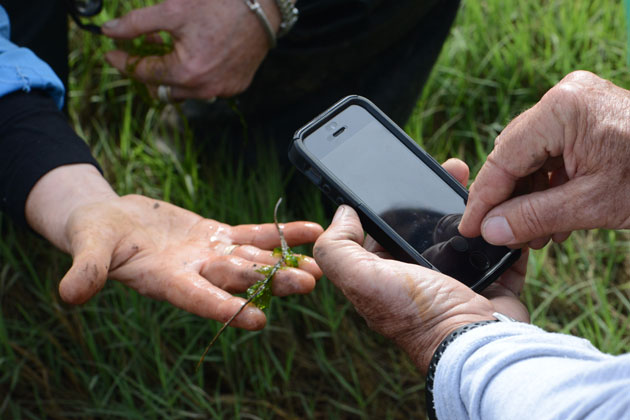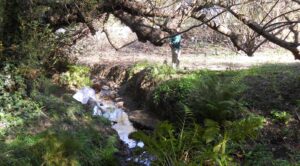The March Golden Gate National Parks BioBlitz recorded 2,303 species, from microbes to mountain lions. One of the most unexpected finds, at El Polin Springs in the Presidio, was a freshwater sponge, one of the most ancient forms of animal life. Technically, it was not an entire sponge but a sponge gemmule, an inactive phase that only evolved in the freshwater descendants of marine sponges. Student members of the UC Davis Entomology Club found it, along with small crustaceans and other creatures typical of ephemeral aquatic environments such as vernal pools.
Gemmules function much like the spores of fungi or ferns. Formed as autumn turns into winter, they can survive prolonged drying and extreme cold, up to -94 Fahrenheit in some species. When warmth returns, the gemmule’s cells diversify, assembling a new sponge. This evolutionary invention opened a broad range of seasonal inland environments to pioneering sponges.
“Freshwater sponges are neither rare or ‘endangered’ and are widely distributed in California,” says faculty adviser Robert Kimsey. “As a diver, I’ve found them in high elevation lakes on submerged logs, in relatively deep rivers and streams on snags, and a lot of other places. They do not appear to be endangered probably because few people know or care about them.” It’s not clear what species of sponge the gemmule represents, and it may take a while for specialists to pin it down.
To Kimsey, the gemmule signifies continuity: “Its presence at that location in the Presidio indicates that the habitat in which it was discovered is relatively ancient and portions of the original fauna have survived all the various perturbations of human endeavor in the last 200 or so years.”
Some of those perturbations had a heavy impact, as recounted by Geoffrey Coffey in Bay Nature (“Whispers in the Water,” Spring 2007.) Native Ohlone people used the spring. Spanish settlers regarded it as not exactly the Fountain of Youth, but a Fountain of Fecundity: local families who drank its water had a disproportionate incidence of twin births. That was before the thirsty roots of introduced eucalyptus lowered the water table, and landfill that contained medical waste from Letterman Hospital buried El Polin’s headwaters.
Restoration efforts, including creek daylighting and the reintroduction of native plants, have given the Presidio’s only spring and largest watershed a new lease on life. That, even in a dry year, helped bring a whole biotic community out of dormancy. Sometimes the recipe for reviving an ecosystem is a simple one: just add water. As simple as a sponge.
Joe Eaton writes about the Bioblitz and its findings in the July issue of Bay Nature.





